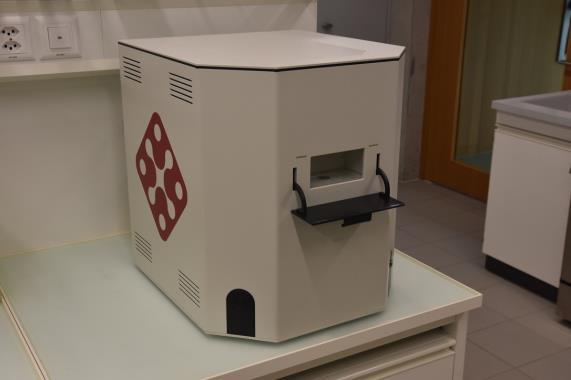Research Report 2021
Institute of Computational Physics
Investigating Charge Transport in Organic Semiconductors with Electrochemical Methods and Modelling Today organic semiconductors are used in many technological applications. However, these materials must be thoroughly studied in order to design even better products. Our project aims to improve the characterization of organic semiconductors using electrochemical measurements in combination with computer simulations. Contributors: Partner(s): Funding: Duration:
G. Kissling, E. Knapp, K. Pernstich Fluxim AG SNSF 2020–2022
Nowadays organic semiconductors are widely used in display and lighting applications (OLED TVs and light panels) and also in the fabrication of novel transistors, sensors, data storage elements and solar cells. In order to produce better devices, the understanding of the physical processes and the materials properties of organic semiconductors needs to be improved. In this interdisciplinary project we investigate organic semiconductor materials using electrochemical methods and (theoretical) multiphysics modelling. The project combines the ICP department’s computer modelling-expertise with fundamental electrochemistry research. The aim of the project is the development of a reliable method for the characterization of a range of organic semiconductor properties and materials parameters. The experiments will give us insight into some properties which have so far been very hard or almost impossible to measure. The data will be fed into a detailed theoretical model. Common numerical models can then be optimized using our experimental results.
conduction band and of defect states) of the material will be investigated. Figure 2a and b show electrochemical measurements obtained on NPB thin films. Figure 2a shows a typical cyclic voltammogram. The signal at 0.8 V originates from the valence band of the organic semiconductor. The smaller signal at around 0.1 V can be associated with the reverse reaction. The inset, Figure 2b, shows electrochemical impedance spectra that were measured at the potentials indicated by the colored symbols in Figure 2a. The impedance spectra help us understand the electrochemical behavior of the thin film semiconductors in more detail.
Figure 2: a: Cyclic voltammogram measured on an NPB thin film. The impedance spectra shown in b were obtained at different potentials marked by symbols in a.
This project may lead to an improved understanding of the current state of the art by providing inputs that lead to the development of more accurate models for organic semiconductor materials characterization. Figure 1: Cartoon depiction of an NPB (N,N′-di(1-naphthyl)-N,N′-diphenyl-(1,1′-biphenyl)-4,4′-diamine) molecule which is used for OLED fabrication.
We are using electrochemical methods to characterize organic semiconductors, such as NPB (N,N′-di(1naphthyl)-N,N′-diphenyl-(1,1′-biphenyl)-4,4′-diamine), shown in Figure 1. NPB will either be studied as a molecule in solution or as a thin film adsorbed onto a substrate. The stability and the semiconductor properties (such as the positions of the valence and
Zurich University of Applied Sciences
33
www.zhaw.ch
















